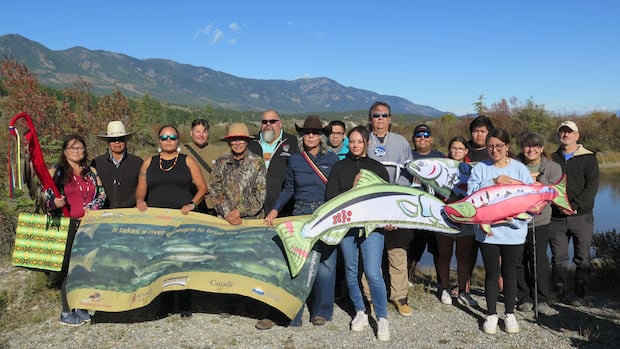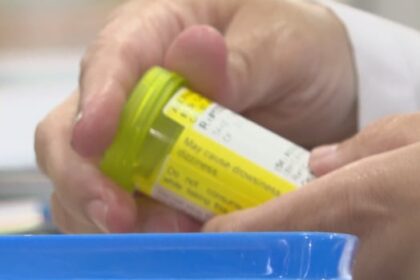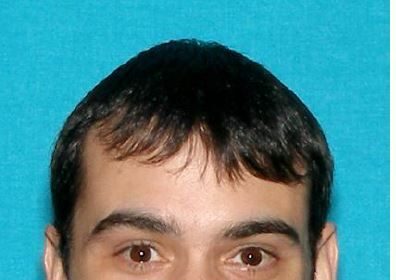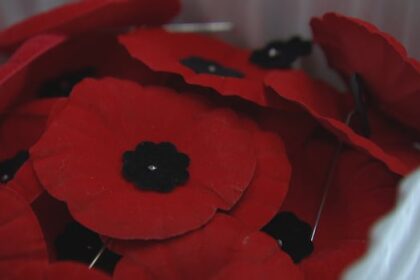IndigenousA salmon reintroduction initiative in B.C. is celebrating after two tagged adult sockeye, released as juvenile fry two years ago, were detected returning up the Columbia River.First Nations-led salmon reintroduction program released fry 2 years agoEdzi’u Loverin · CBC News · Posted: Oct 14, 2025 7:00 AM EDT | Last Updated: 2 hours agoThe return of two sockeye salmon released as fry to the Columbia River has monumental significance, says Mark Thomas, Shuswap Band councillor. (Bringing the Salmon Home Initiative)A salmon reintroduction initiative in B.C. is celebrating after two tagged adult sockeye, released as juvenile fry two years ago, were detected returning up the Columbia River.The adult fish are two of 10,000 fry that were released near Castlegar as part of the Bringing the Salmon Home project. The project by the Columbia River Salmon Reintroduction Initiative is led by the Syilx Okanagan, Secwépemc, and Ktunaxa nations in partnership with the federal government and the province.Mark Thomas, a Shuswap Band councillor and chair of the initiative’s executive working group, said though it seems like a small number, the significance is monumental.“It just goes to show that when given the opportunity, these fish will find their way, and it only takes one to show the rest of them how, where they need to go, and they will follow,” said Thomas.“If we were going to do real restoration efforts, we would be dropping fish in the millions … The fact that we got two fish that came out back out of 10,000, it just blows us away.”Lance Thomas releases sockeye salmon fry into the upper Columbia River in 2023. (Bringing the Salmon Home Initiative)The Columbia River is 2,000 kilometers long, and runs from the Kootenay region of B.C., emptying into the ocean at Astoria, Ore.One of the two sockeye was detected nearly 800 river kilometres upstream from the mouth of the Columbia River, near Wells Dam in Washington State. The other was near the Rocky Reach Dam, around 60 kilometres south of Wells Dam.That’s about as far upriver as fish passage currently allows, said a statement by the Bringing the Salmon Home Initiative.Salmon ‘virtually eliminated,’ says foundationThe salmon revitalization initiative says there are no fish passageways up the Columbia River at the Chief Joseph Dam or Grand Coulee Dam, upstream from where the two tagged salmon were detected.According to the Pacific Salmon Foundation, the Columbia River basin historically supported returns of up to four million salmon, but development including 12 major dams “has virtually eliminated salmon from most of the Canadian portion of the Columbia for more than 80 years.”Thomas said the lack of salmon in his territory has greatly impacted his people.”Salmon was really a basis of our lives. It was us,” said Thomas.”The last 86 years we’ve been without and it’s had huge detriments to our our people, to our ability to transfer knowledge, to our ability to speak our languages, for ability to teach our kids and to show what those fish could do for us.”The Bringing the Salmon Home Initiative has received around $5.2 million through the second phase of the B.C. Salmon Restoration and Innovation Fund, co-funded by B.C. and Canada.ABOUT THE AUTHOREdzi’u Loverin is graduate of CBC’s Indigenous Pathways Program and has reported in Vancouver and Winnipeg since 2024. Edzi’u is a member of the Taku River Tlingit First Nation and a registered member of the Tahltan Nation, but is currently based in xʷməθkʷəy̓əm, Sḵwx̱wú7mesh, and səlilwətaɬ territories. You can email Edzi’u at edziu.loverin@cbc.ca with story ideas.
Saturday, 29 Nov 2025
Canada – The Illusion
Search
Have an existing account?
Sign In
© 2022 Foxiz News Network. Ruby Design Company. All Rights Reserved.
You May also Like
- More News:
- history
- Standing Bear Network
- John Gonzalez
- ᐊᔭᐦᑊ ayahp — It happened
- Creation
- Beneath the Water
- Olympic gold medal
- Jim Thorpe
- type O blood
- the bringer of life
- Raven
- Wás’agi
- NoiseCat
- 'Sugarcane'
- The rivers still sing
- ᑲᓂᐸᐏᐟ ᒪᐢᑿ
- ᐅᑳᐤ okâw — We remember
- ᐊᓂᓈᐯᐃᐧᐣ aninâpêwin — Truth
- This is what it means to be human.
- Nokoma












